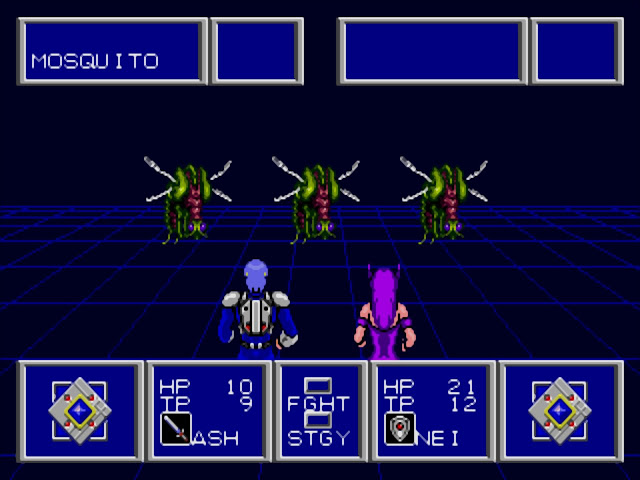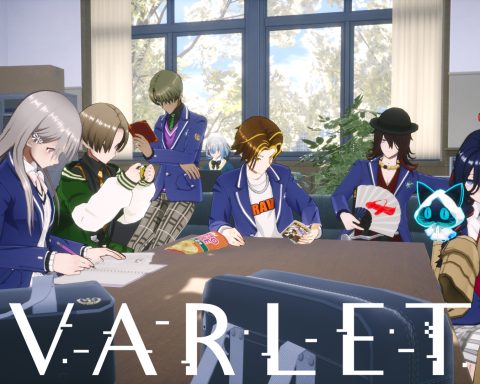Review by Harvard L.
In the long run, Nintendo’s decision to bottleneck the Switch’s Virtual Console to three or four NES games per month did have its benefits. While the Wii and 3DS leveraged third-party Virtual Console titles to bridge gaps between first party releases, the Nintendo Switch has the opposite problem of too many games, and so companies like SNK, Capcom and now SEGA have felt comfortable with dropping their whole back catalogue onto the eShop for easy access. SEGA Mega Drive Classics Collection is an eclectic mix of classics from the late 80’s and early 90’s, gathering the games all together in a hub room filled with posters and SEGA memorabilia. For a retro collection it has a refreshing and varied set of represented genres – action and strategy, single and multiplayer, story-focused and arcade-style. For any Mega Drive fan, the Switch compilation is not to be missed.
To clarify, SEGA Mega Drive Classics Collection (or Genesis Classics Collection in the US) is a port of a port. The original “game hub” design originated through SEGA’s Mega Drive re-releases on Steam, which a few years ago implemented an overarching framework to allow for cross-game achievements and customisation. On Steam, you can buy “volumes” of around eight titles apiece, which would get added to the hub. The Switch release contains every game available on those volumes (except Sonic 3 & Knuckles, two Wonder Boy titles and the Ecco the Dolphin trilogy – all victims of copyright issues, sadly) as well as some bonus features such as fast-forward and rewinding of gameplay, save states and online multiplayer. The total collection rounds out at a staggering 51 games.
SEGA has been one of the more proactive companies regarding re-releases, so it can be confusing to think of how everything fits together. This release presents the original Mega Drive games emulated as they were originally, with only small cosmetic changes as well as external manipulation such as save states. This whole package is done by D3T Limited with no association to M2 – so this release is wholly unrelated to the ongoing SEGA Ages project as well as the 3D Classics collection on the 3DS. M2’s Sonic the Hedgehog release on the Switch is the same game as the one in this compilation (neither of them are the very different “Sonic the Hedgehog” that released on the Master System), but M2 has a habit of embellishing old games with a modern eye – for example SEGA Ages Sonic port adds the spindash from later games – and they come at a higher price point as a result.
As more Ages games arrive on the Switch I am sure there will be more overlaps between the two re-release projects. When you play a game in D3T’s SEGA Mega Drive Classics Collection, you know you’re getting it exactly as it ran on the original Mega Drive, for better or for worse. For most games this is a great thing – the Mega Drive’s original 3 button controller layout fits nicely onto one or two Joy-Cons and when playing with two, the triggers are used for fast forward and rewind, while the right stick maps to a handy quicksave feature. For games that use the later introduced six-button layout, such as Streets of Rage 3, the additional buttons are mapped to X and the shoulders. Unfortunately there’s no way to customise controls, which creates problems in games which would benefit from rapidfire, such as Bio-Hazard Battle, a scrolling shooter. This does, however, mean that any problems present in the original releases remain in the Switch port.
The thing I find most interesting about nearly all the games in this collection is that they provide a stunning insight into the video game market of the 1990’s. Forget PlayStation 4 and Xbox One, SEGA’s Mega Drive against the SNES was a properly heated console war, and the spirit of competition burns bright. Most players might know the story of how Sonic the Hedgehog and his nemesis Dr. Eggman was created as part of an internal marketing competition for a company mascot, but there are so many other parallels that would be easy to draw. It’s easy to imagine being in a playground in 1992 and arguing about Ninja Gaiden vs. Shinobi, Tetris vs. Columns or Final Fantasy vs. Phantasy Star. Don’t feel that I am accusing SEGA and Nintendo of ripping each other off, either – if anything I think the competitiveness of the era created fire-forged development styles that stand the test of time, and led to the innovative nature of many titles available in the Mega Drive Classics Collection.
In the early 90’s SEGA boasted three in-house development studios, and all were doing incredible work. SEGA AM1 (formerly R&D1) was tasked with pushing out arcade hits like the Shinobi and Golden Axe series, while SEGA AM2, headed by Yu Suzuki, pushed the envelope of 3D technology with games like Space Harrier and Virtua Fighter. Together, the two studios put SEGA on the map as an accomplished developer for the arcades from which Nintendo had largely retreated to focus on the NES and SNES. Meanwhile, SEGA’s third studio (SEGA Consumer Development) was devoted to the home console front, leading to titles like the Alex Kidd and Phantasy Star series, as well as an offshoot headed by Yuji Naka which would retroactively become Sonic Team. All three studios feature heavily in the Mega Drive Classics Collection, as well as some key third party efforts like Treasure’s Gunstar Heroes and lesser known ARPG, Light Crusader.
The games themselves in the Mega Drive Classics Collection are a mixed bag, owing to the convoluted management structure that SEGA employed in its Mega Drive era. Localisation name changes for games and systems were common, as well as differences between arcade and home console versions. The differences between the arcade and home console markets took a toll on the Mega Drive’s library: a few of the games in this collection are ports of arcade games running on superior hardware (in the Mega Drive’s life span, SEGA released around one new arcade platform per year) and while the work of the developers were admirable in getting 3D effects into a 16 bit console, games like Super Thunder Blade and Galaxy Force II were received poorly even upon their original release. Even Space Harrier II, which was designed specifically for the Mega Drive, runs at what feels like 16 frames per second, and barely captures the frenetic joy of the arcade original. SEGA’s ethos with these releases definitely looks to be catering towards nostalgia – even though there are some absolute gems in this collection, they’re still kept shoulder to shoulder with questionable ports like Virtua Fighter 2 and kitschy 90’s games like Altered Beast.
It’s a shame that none of the games in this collection bear any information about them in the Switch compilation itself – all the player gets is a name: no blurb, no cover art, no instruction booklet. Other recent retro compilations have been brilliant at those “museum-like” features, and in my experience the games were much more enjoyable with historical context given – at the very least the player should know the year of release. Most are simple enough to pick up and play, but I did end up having to look up instructions on the Internet as well. The collection is also missing a game notes function, which is a shame because there are a half-dozen JRPGs included which will need you to be drawing your own maps.
Because the Mega Drive prided itself on superior hardware and a memorable American marketing campaign pushing Blast Processing™, the games tended to feature bigger sprites and smoother scaling, as well as a truer sense of speed. In Mega Drive Classics Collection, this is augmented by five distinct display options which can either render the game as it was originally released, pixel-by-pixel, or apply a variety of modern filters to smooth out the graphics. Usually I’m a purist when it comes to sprite graphics, and there have been a fair share of gaffes when developers have tried to “modernise” sprite work (hi, Square Enix and Final Fantasy), but the filter in this collection work like a dream, making the games look like what we imagined them to look like 25 years ago.
Another small modernisation with a big impact is the fast forward and rewind system, which helps to speed up turn based combat in games like Phantasy Star II, and mitigates the punishing difficulty of games like Comix Zone. So many of the Mega Drive’s games were developed with arcade coin-catching sensibility mixed with the assumption that kids would receive one game every six months or so – leading to design choices like limited lives, health-costing special moves, long gaps between checkpoints and starting all over if you lost. The rewind option breathes new life into games which never would’ve caught my attention without it, and it even works in co-op!
The arcade-y design is a perfect fit on the Nintendo Switch, which is more conducive to shorter play sessions benefits from local multiplayer. The collection keeps high scores tracked across games in one neat menu, and matches your performance to your friends online. Matchmaking is cleverly implemented due to the collection’s hub-room system: you can check which games you would be interested in playing online, and can load up something to play single player while the system searches for a partner in the background. I did wish that the games also offered progress tracking, however, as there’s no satisfaction of checking off which games you have beaten so far. There are some achievements and challenge conditions, but they seem to be doled out in an arbitrary manner.
Ultimately the only complaints that I can levy against SEGA Mega Drive Classics Collection are that there is not quite enough icing on what is an admittedly very generous cake. With this compilation you’ll be getting 50 games at an absolute steal – and while some of them are historical curios that won’t be worth your time, most are fantastic. The collection is right at home on the Switch: the portability opens up the definitive way to play classics like Sonic the Hedgehog or Shining Force, the ease of multiplayer means you’ll be able to share co-op gems like Streets of Rage 2 or Gunstar Heroes, and hopefully the deep cuts in the compilation will introduce a new generation to overlooked and underrated games like Ristar or Beyond Oasis. Whether you played every Mega Drive title as a kid or even if you’ve never heard of SEGA, you’ll be sure to find something to love in this collection.
– Harvard L.
Contributor











